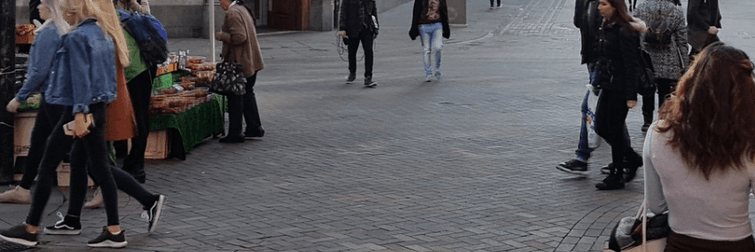
blog: Pedestrian priority: changes to the Highway Code
Thursday 16th September 2021
The Government recently announced important changes to the highway code which will give priority to pedestrians and cyclists over cars at junctions and crossings.
If, like me, you are a regular pedestrian, walking across the road and attempting to command the space is often a daily occurrence, even sometimes when you do actually have a priority. It is therefore welcoming that the Government has listened to vulnerable road users as part of a significant consultation process to make changes to the highway code and improve road safety for cyclists and pedestrians.
So, what's new?
Proposed changes are focused more on vulnerable road users, particularly those who are walking, cycling or horse riding. There is a desire to introduce a hierarchy of road users to ensure those who can do the most damage (i.e., cars, vans, lorries) have a greater responsibility to reduce the threat they pose to others.
The proposed hierarchy will be a much-welcomed upgrade to the code, particularly in the eyes of cyclist campaigners who for years have tried to educate motorists on how to travel safely when sharing road space with cyclists. Another proposed change focuses on pedestrians to clarify existing rules and advise drivers to give way to pedestrians crossing or waiting to cross the road.
In some cases, this already happens, particularly in more rural or quieter locations, so it feels as though this change should be a simpler one to implement and for motorists to absorb.
There are also proposed changes to provide guidance on cyclist priority at junctions to advise drivers to give priority when travelling straight ahead and to establish guidance on safe passing distances and speeds when overtaking horse riders and cyclists.
What did the consultation find?
The Government consultation on the proposed changes ran from 30th July 2020 to 30th October 2020 and the majority of respondents were in favour of all proposed changes. During the consultation process, it was also noted that people felt the timing of a change to the highway code was positive, given the significant increase in people walking and cycling during the pandemic.
What's next?
During the consultation process, one of the key concerns from respondents was to ensure that all road users are made aware of the changes in order to be able to act upon them, particularly as a lot of people won’t regularly read the highway code after they have passed their driving test.
In response, the Department for Transport (DfT) will be creating an awareness campaign alongside the publication of the updated highway code. Along with the existing Think! branding, the DfT will also research and develop a bespoke behaviour change campaign aimed at vulnerable users and motorists.
Subject to Parliamentary approval, work will begin with the Driver and Vehicle Standards Agency (DVSA) to update the highway code.
Will it make a difference?
Any proposals or pieces of legislation which consider vulnerable road users are sure to benefit pedestrians and cyclists. While the proposed changes to the highway code are welcomed, it is going to be interesting to see how instant or slow the responses from motorists are.
In the current system, we already regularly witness motorists failing to provide enough space to cyclists or failing to stop for pedestrians and while this is a minority, it is clear education is already required in some instances. The need for education and awareness will only increase as these new changes are introduced so the planned publicity campaign from DfT will need to be highly effective in order for benefits to be felt.
If responses from motorists are relatively swift, hopefully this will create a safer environment for pedestrians and cyclists and continue to support the increase in active travel that we have seen grow as a result of the Covid-19 pandemic.
Active travel is something many people wish they could take up and when talking to the general public at events or within businesses, road safety is always very high on their list of barriers. Any improvements to people’s perceptions of cycling and walking on the road network are a step in the right direction.
If you'd like to keep up to date with our latest news and blogs, visit our website.
